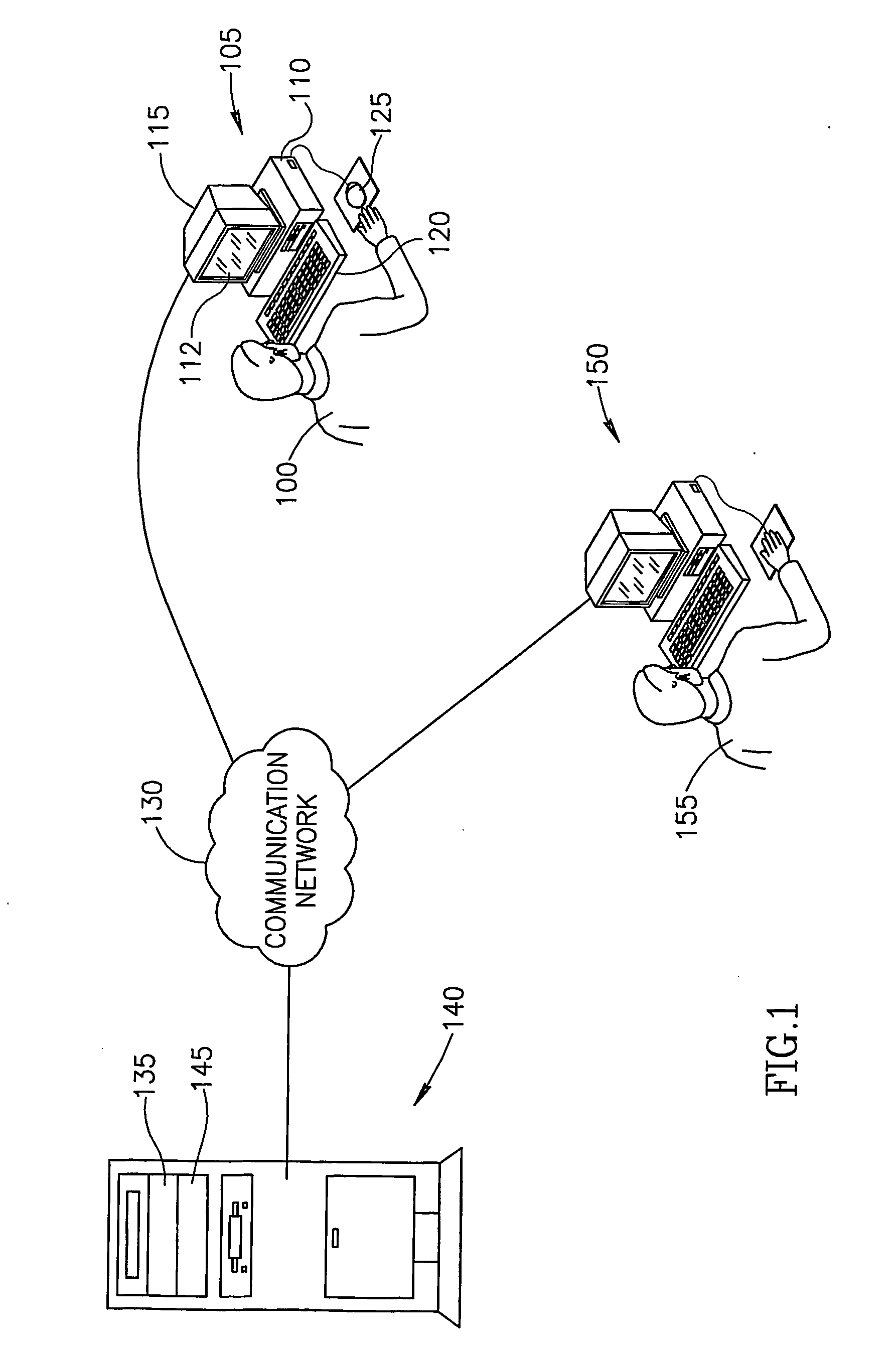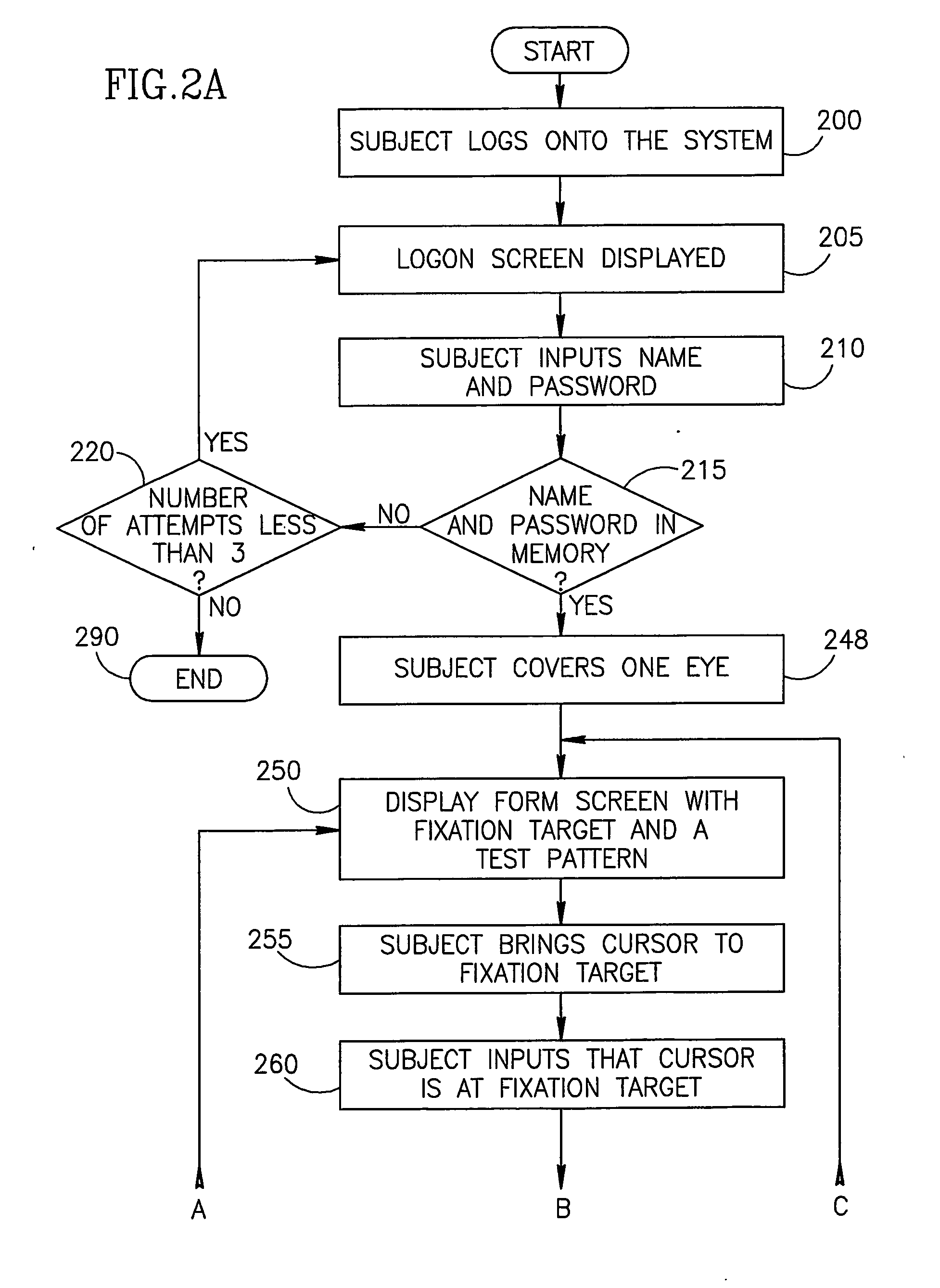Method and system for assessing eye disease
a technology for eye disease and eye disease, applied in the field of eye disease method and system, can solve the problems of halting or slowing the progression of the disease, not improving visual function, and poor detection of early changes,
- Summary
- Abstract
- Description
- Claims
- Application Information
AI Technical Summary
Benefits of technology
Problems solved by technology
Method used
Image
Examples
experiment 1
[0463] In this experiment two groups were tested. The first group included 28 subjects all clinically diagnosed to have normal retinas (normal group). The second group included 32 subjects clinically diagnosed to have AMD with high risk characteristics (AMD with HRC group). All subjects (ranging in age between 50-90 years old) were given a complete eye examination by a retina specialist prior to performing the tests for the experiment. After the diagnosis was recorded by the retina specialist each of the patients was tested using an MCPT adapted for the experiment as disclosed hereinafter.
[0464] The artificial distortions presented were selected from artificial distortions (AD) having a height of 0.19°, 0.22° as disclosed hereinabove. Each test pattern had a dimension of approximately 14°. Half of the test patterns presented to each patient, were generally horizontally oriented and the other half were generally vertically oriented, as disclosed hereinabove. Altogether, the test pat...
experiment 3
[0556] This experiment was performed to test different types of auditory stimuli for their efficacy as competing stimulus (CS), in accordance with yet another embodiment of the present invention. The study included three tested individuals having normal retinas (as ascertained by full ophtalmological examination as disclosed hereinabove). Each one of the tested individuals was subjected to five different tests (designated as tests 1-5). Each of the tests 1-5 included presenting a total of thirty eight (38) test patterns to the tested individual using the flash method as disclosed in detail hereinabove. The test patterns were segmented straight lines as disclosed in detail hereinabove for EXPERIMENT 2. Of the thirty eight test patterns presented in each test, nineteen test patterns were vertical and the other nineteen test patterns were horizontal. Each of the 38 test patterns included an AD having a height of 0.12°, as disclosed hereinabove. The position of the AD within the test pa...
PUM
 Login to View More
Login to View More Abstract
Description
Claims
Application Information
 Login to View More
Login to View More - R&D
- Intellectual Property
- Life Sciences
- Materials
- Tech Scout
- Unparalleled Data Quality
- Higher Quality Content
- 60% Fewer Hallucinations
Browse by: Latest US Patents, China's latest patents, Technical Efficacy Thesaurus, Application Domain, Technology Topic, Popular Technical Reports.
© 2025 PatSnap. All rights reserved.Legal|Privacy policy|Modern Slavery Act Transparency Statement|Sitemap|About US| Contact US: help@patsnap.com



